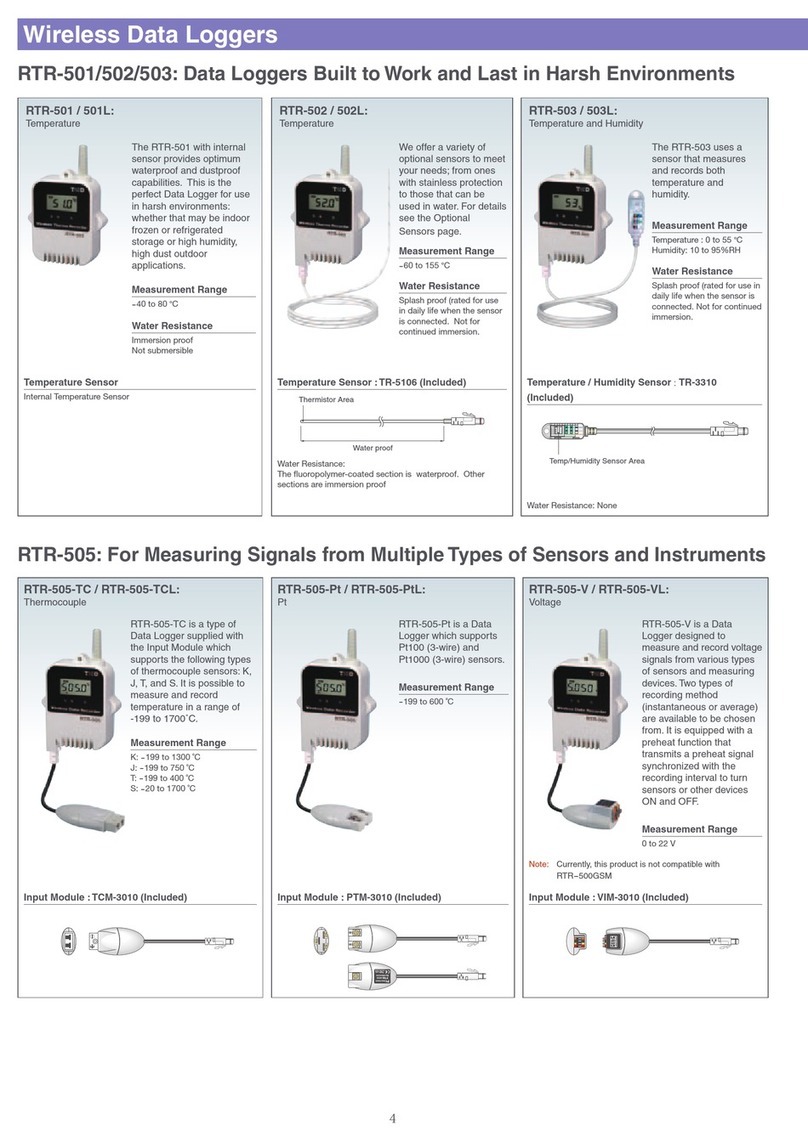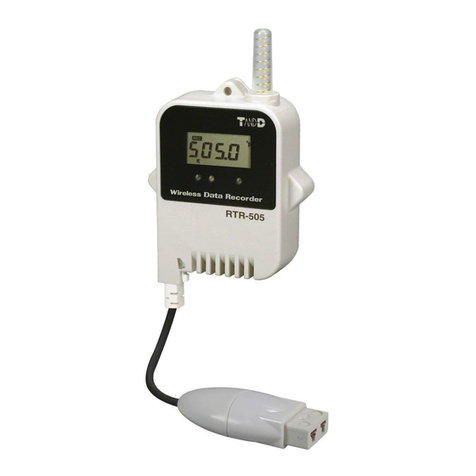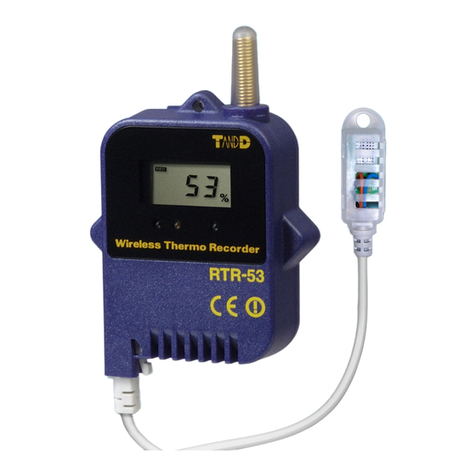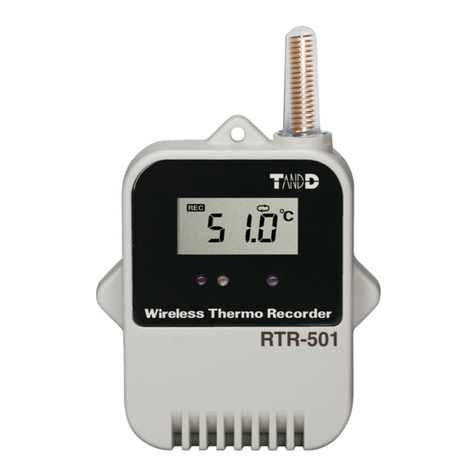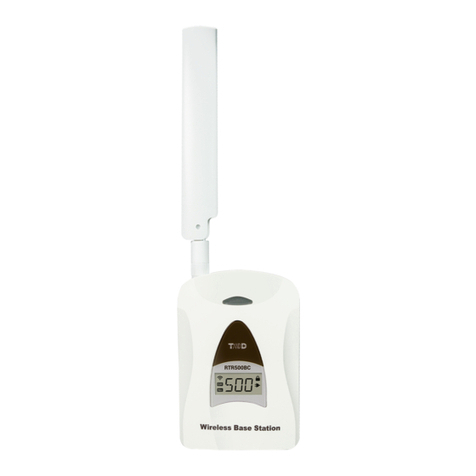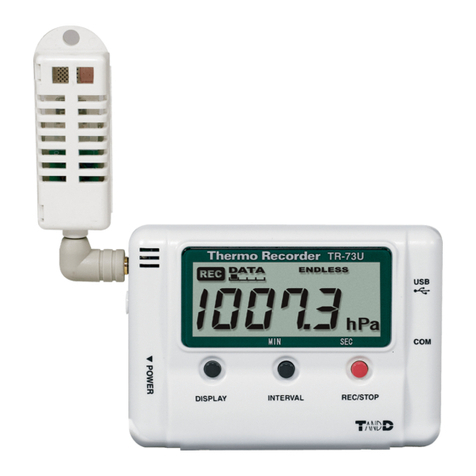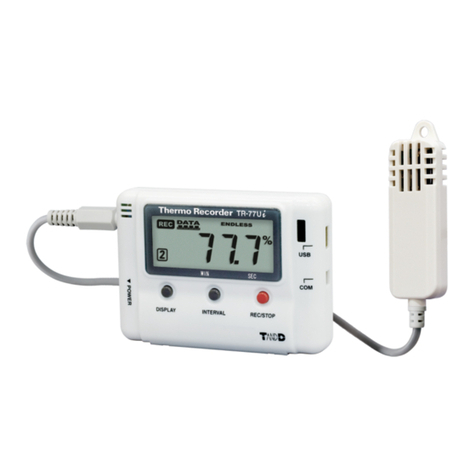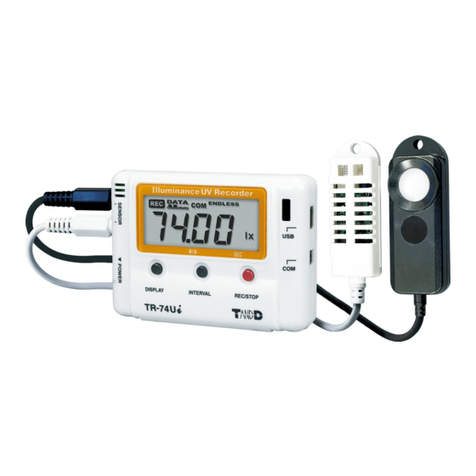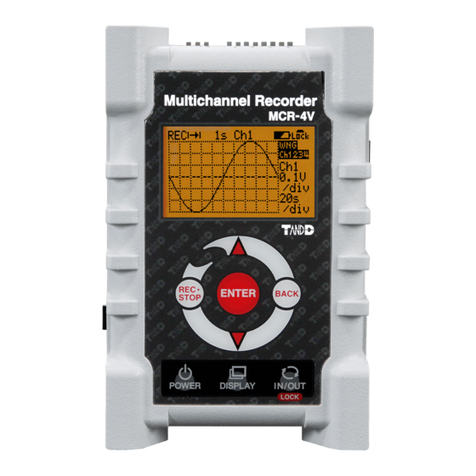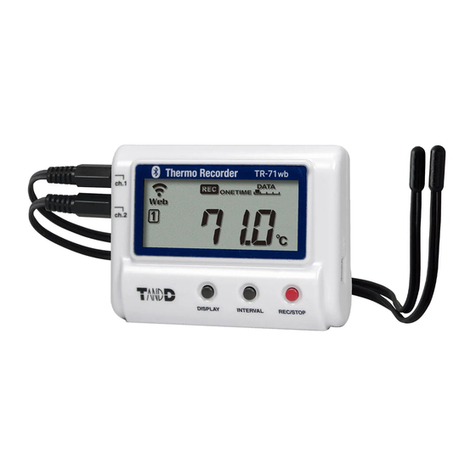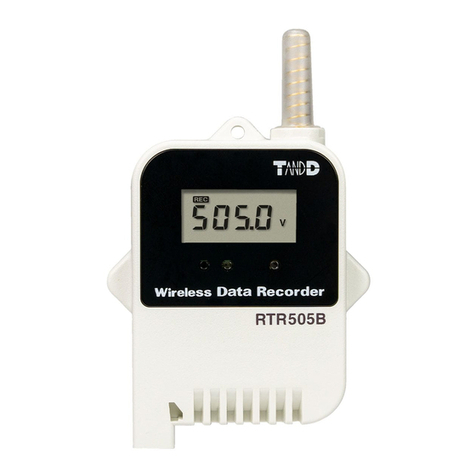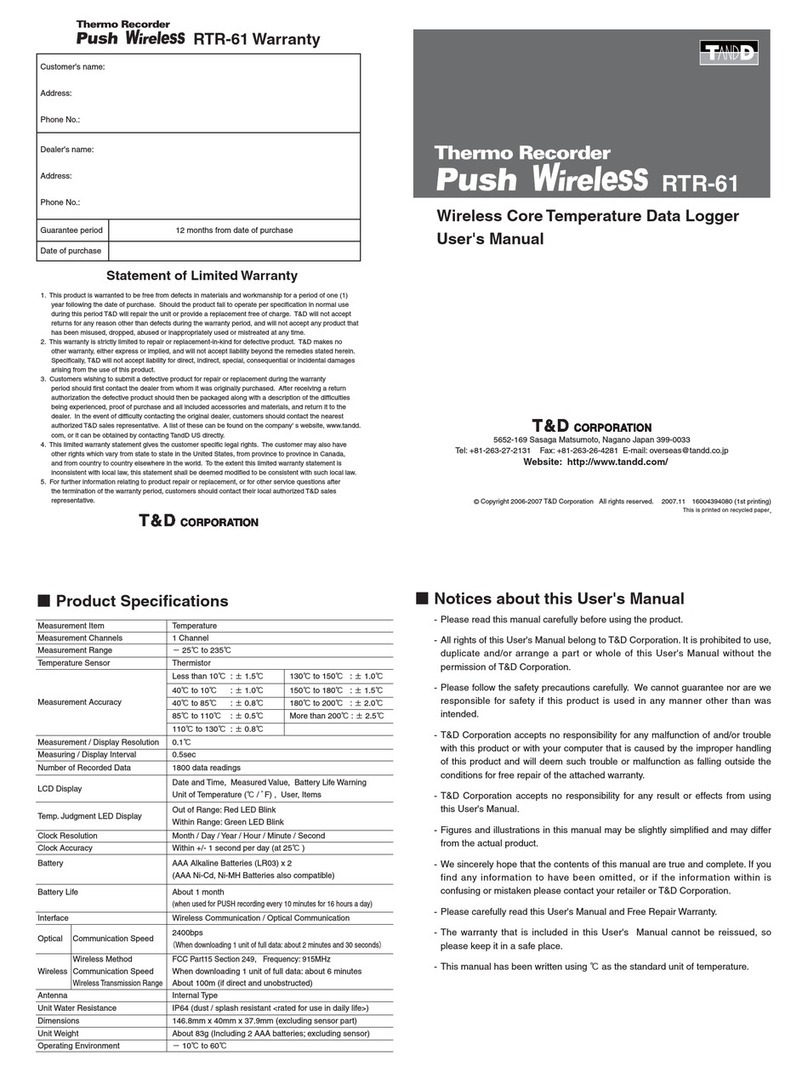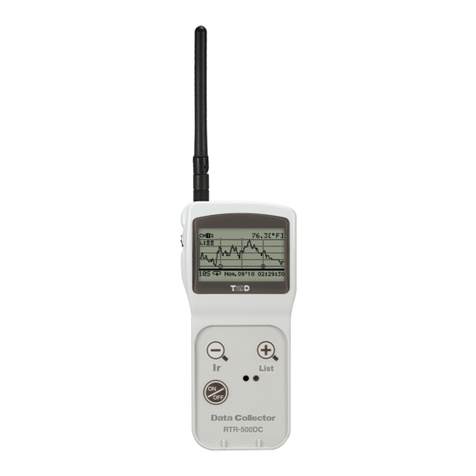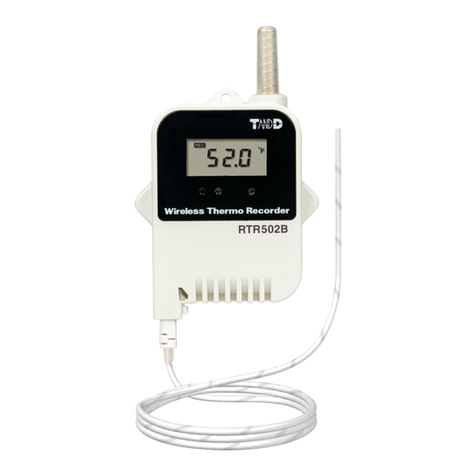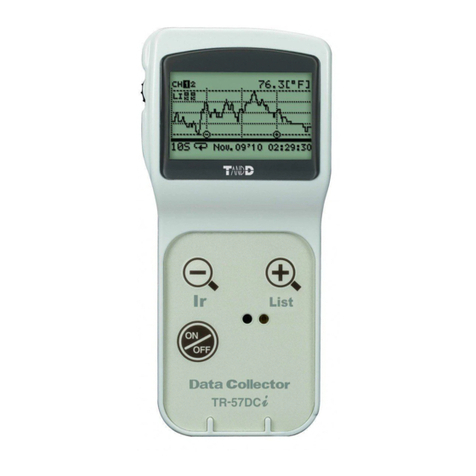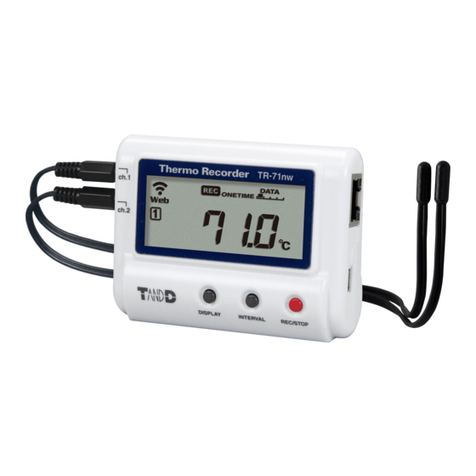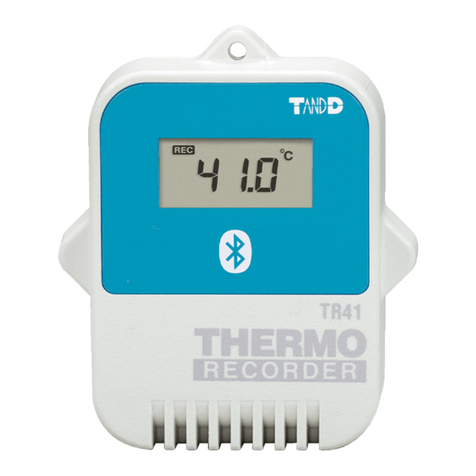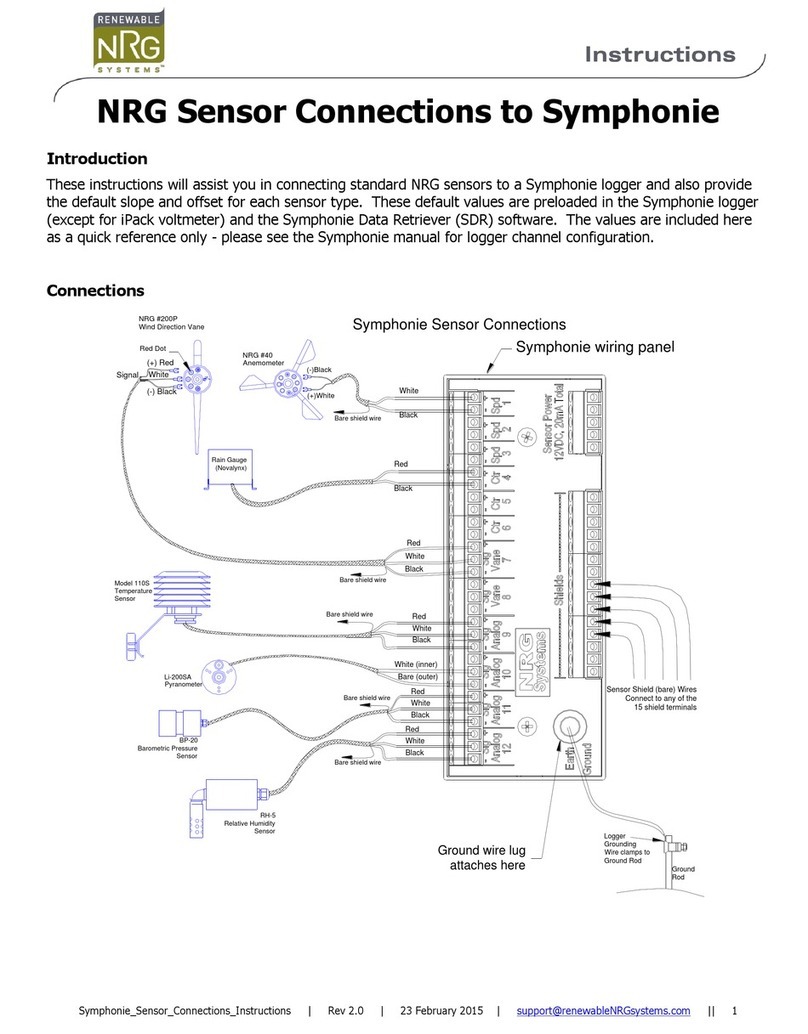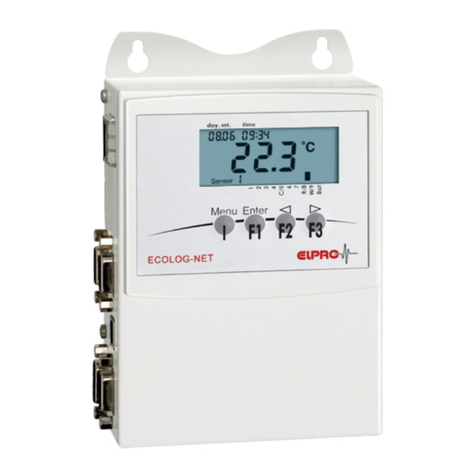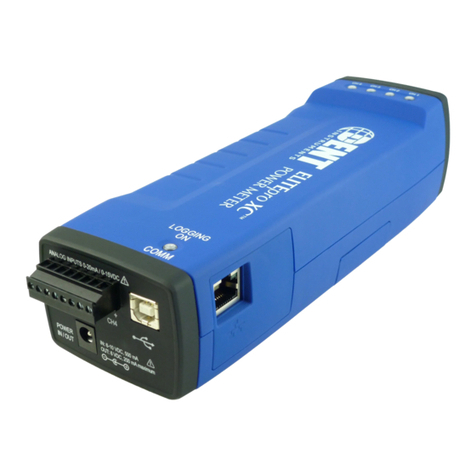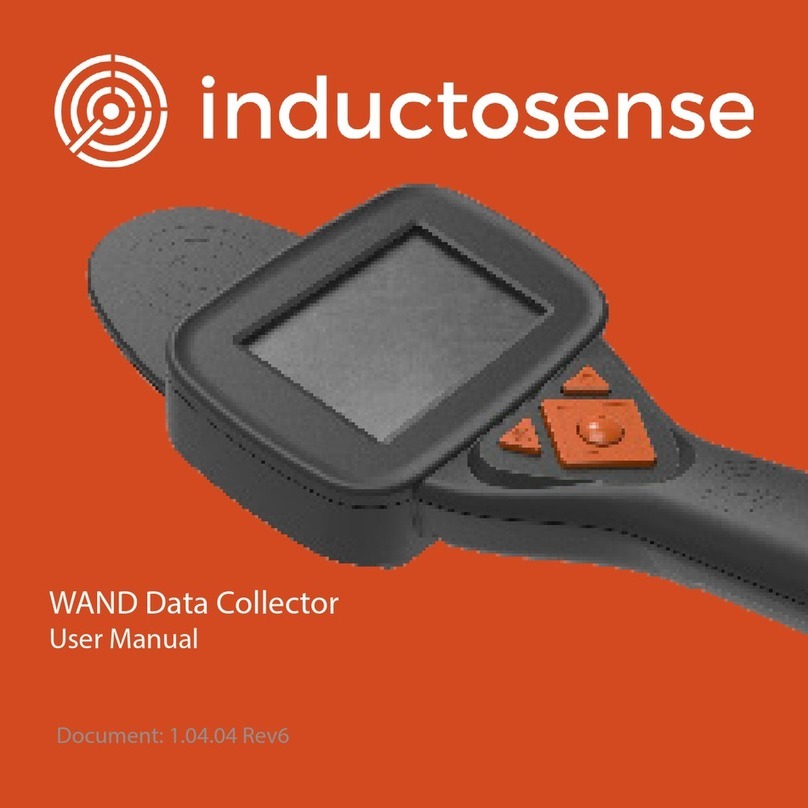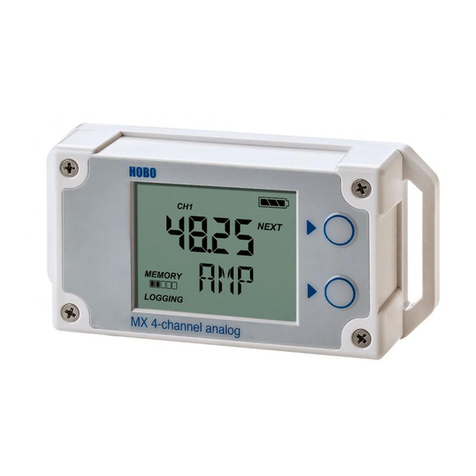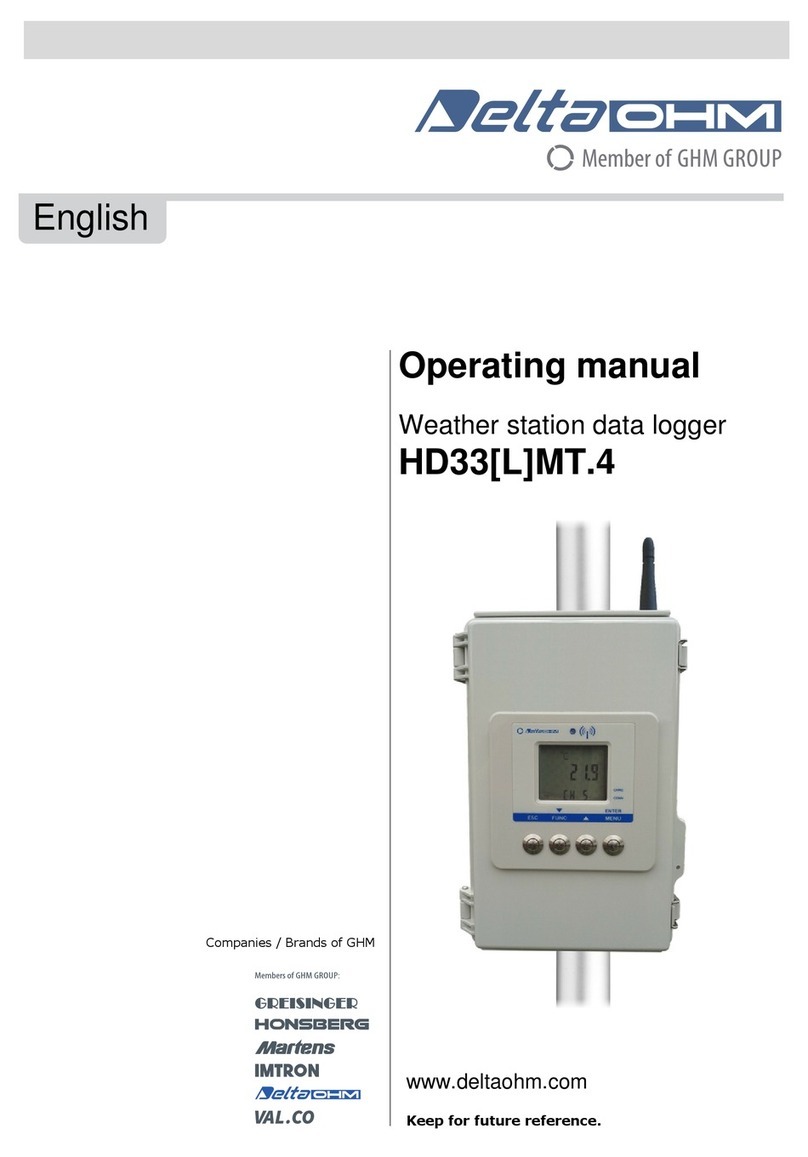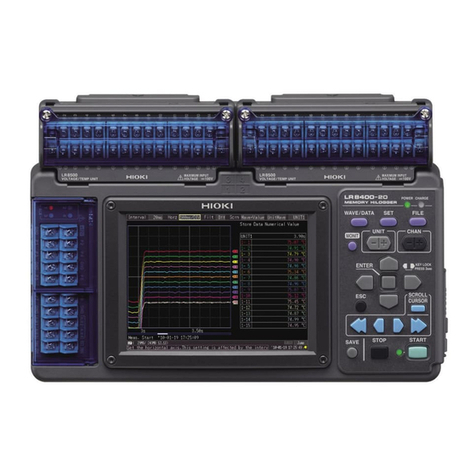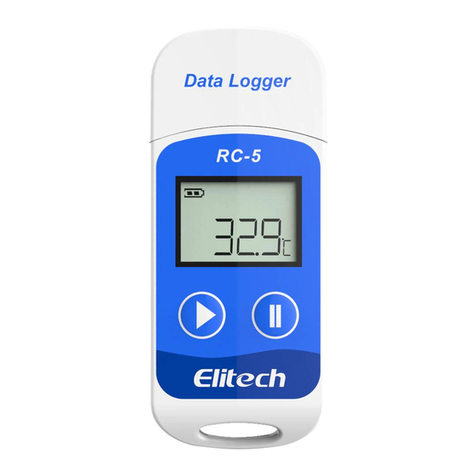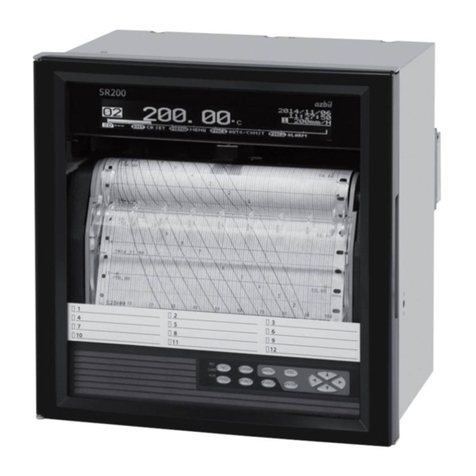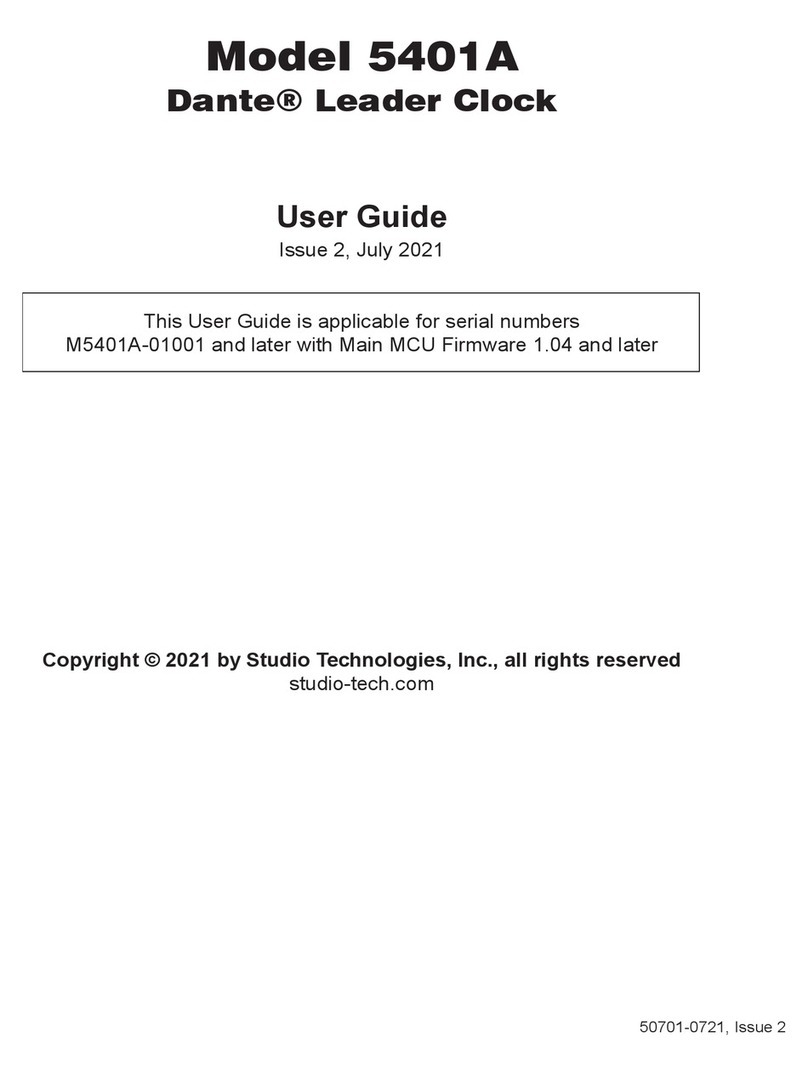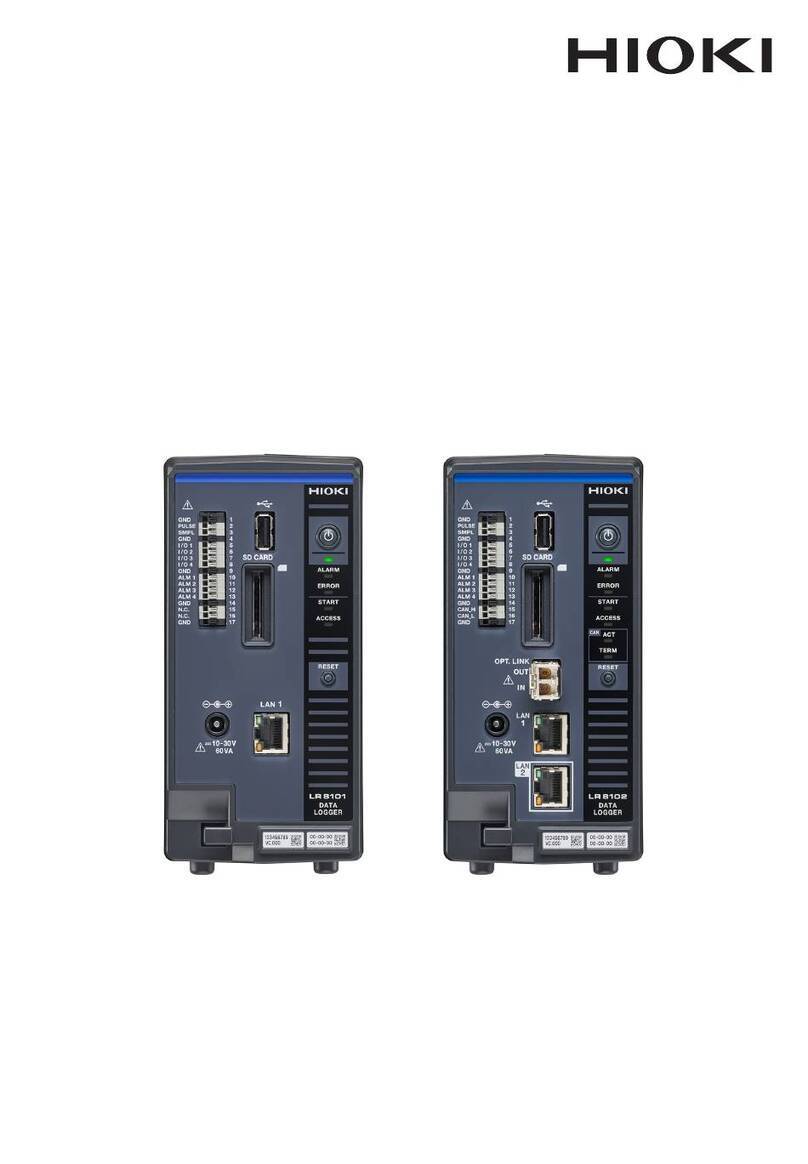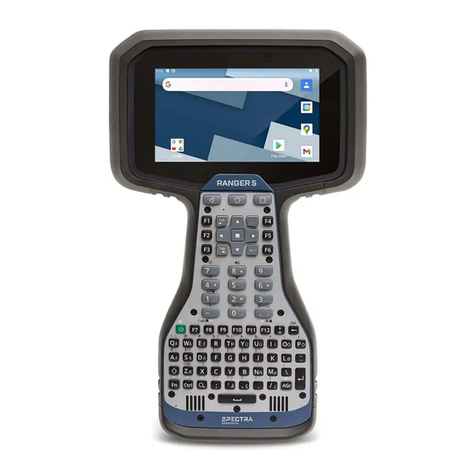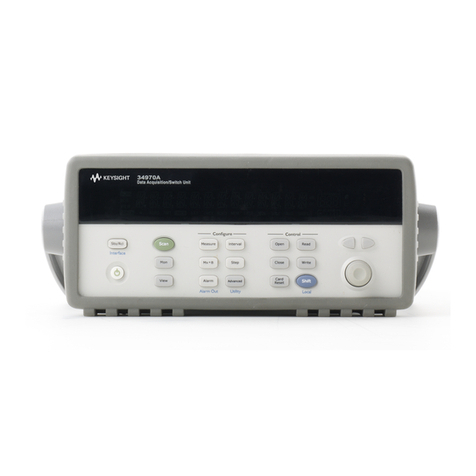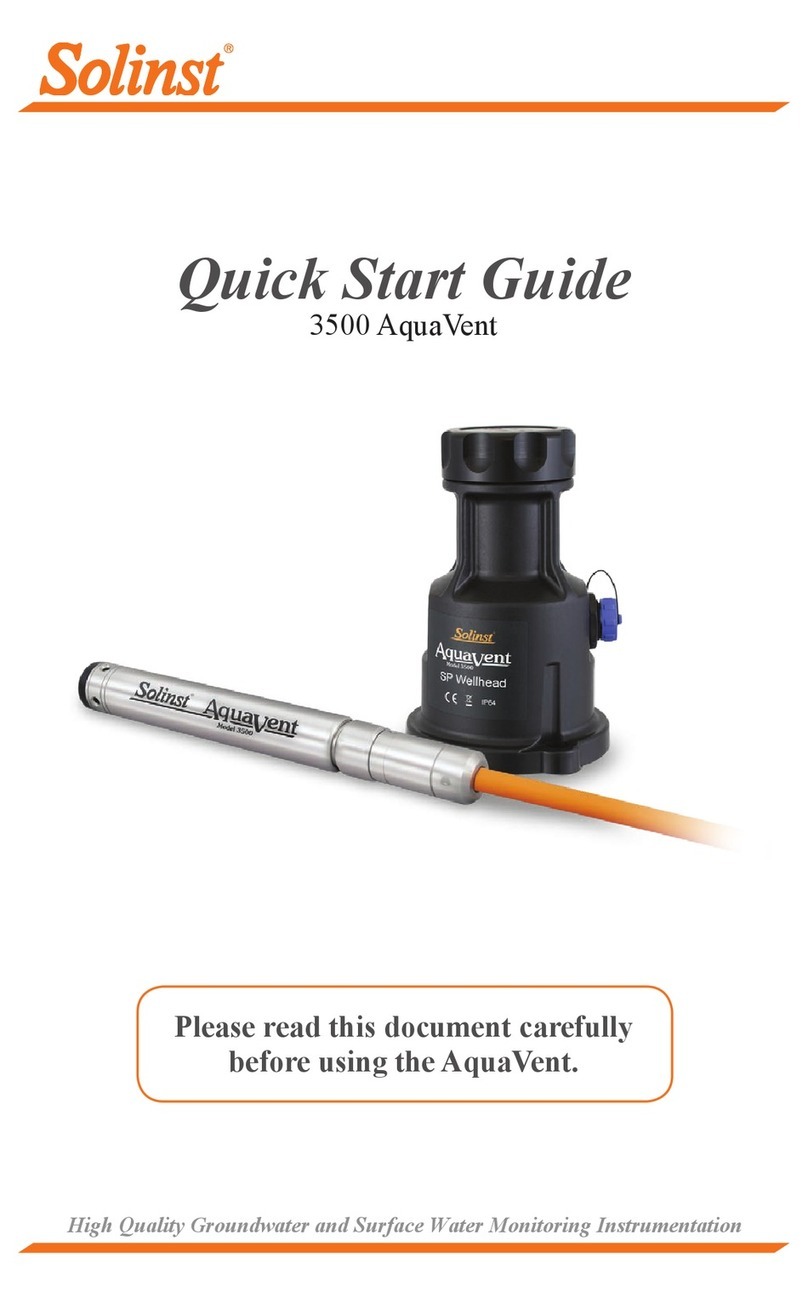T&D RTR505B User manual

Wireless Data Recorder
RTR505B User’s Manual
Thank you for purchasing our product.
To ensure safe and proper operation, please read this manual
thoroughly before use.
Overview
RTR505B is a data logger designed to measure and record
dierent items depending on the input module to be con-
nected: temperature (Thermocouple, Pt), analog signal
(4-20mA, DC voltage), and pulse.
Recorded data is then automatically collected by the Base Unit via
wireless communication and downloaded for archive and analysis.
As a Remote Unit, RTR505B requires a Base Unit to carry out wire-
less communication.
(Compatible Base Units: RTR500BC, RTR500BW, RTR-500MBS-A, RTR-
500DC, RTR-500, RTR-500NW/AW)
For the operation and conguration of the Base Unit, refer to
the instruction manual attached to the Base Unit or the RTR500B
Series Help available on T&D Website.
Wireless Data Recorder RTR505B is referred to as the “(data) logger”
or “device” in this manual.
tandd.com
© Copyright T&D Corporation. All rights reserved.
2020.09 16508210003 (1st Edition) Printed on recycled paper.
Input Modules (Sold Separately)
Measurement Item
Input Module LCD Displayed Items
Temperature
(Type K, J, T, S)
Thermocouple Module
(TCM-3010)
Measurement, Unit of Measurement,
Sensor Type, Operational Status
Temperature
(Pt100, Pt1000)
PT Module
(PTM-3010)
Measurement, Unit of Measurement,
Sensor Type, Operational Status
Voltage Voltage Module
(VIM-3010)
Measurement, Unit of Measurement,
Operational Status
4-20mA 4-20mA Module
(AIM-3010)
Measurement, Unit of Measurement,
Operational Status
Pulse Pulse Input Cable
(PIC-3150)
Measurement, Unit of Measurement,
Operational Status
• Before using the pulse input cable, it is necessary to set the measurement item to “pulse
type” in the Remote Unit Settings of the application.
• In order to change the measurement item, initialize the Remote Unit without connecting
the input module and then redo the Remote Unit registration and settings.
Make sure that the module is completely
inserted until you hear a “click” sound.
Installing the Battery
Recording starts automatically by inserting the battery with the
default or previous settings.
Battery
Cover
Rubber
Packing
Screw
Lithium Battery
Default Settings
Recording Mode Endless
Recording Interval 10 minutes
Recording Start
Method
Immediate Start
• Make sure to use the proper type and
size screwdriver. (Phillips head #1
screwdriver is recommended.)
• Insert the supplied battery with the
tube attached. When using a CR2 lithi-
um battery, the tube is not necessary.
• Before closing the cover, check the
rubber packing for dust or scratches,
as they can reduce the water resis-
tance of the rubber.
• Be sure to completely close the cover.
Make sure not to over tighten the
screws.
• Appropriate Tightening Torque:
20N·cm to 30N·cm (2Kgf·cm to 3Kgf·cm)
Battery Replacement
When it is time for the battery to be
replaced, a battery warning mark will
appear. Please change the battery as
soon as possible if this mark appears.
If you continue to use the logger without changing the battery, the
current temperature and [bAtt] will be displayed alternately and
wireless communication will stop. (Recording will continue.)
Alternating
Display
• If the battery is further left unchanged, the display will automatically shut
o and all previously recorded data will be lost.
• Although the logger continues to work for a period after the battery has
been removed, leaving the device without a battery until the LCD display
goes blank will cause all recorded data to be lost.
Remote Unit Registration
Using the software of the compatible Base Unit, carry out Remote
Unit Registration via optical or Bluetooth.
Optical Communication
Connect the Base Unit to a PC with a USB cable, and place the data
logger face down to align the communication areas as shown below.
Bluetooth® Communication
When the RTR500BW is a Base Unit, it is possible to make Base Unit
and Remote Unit settings from nearby mobile devices using Bluetooth.
Package Contents
• RTR505B or RTR505BL (Large Battery Type)
• Lithium Battery LS14250 (or Large Capacity Battery Adaptor Kit RTR-500B1 for L type model)
• Strap (Not included with L type model)
• Manual Set (Warranty Included)
Part Names
Module Jack
LCD Display
Antenna
Optical
Communication
Port
<Side>
(L type)<Side><Front> <Back>

Basic Measurement Display
Display varies depending upon the input module connected.
Temperature (Thermocouple / Pt100 / Pt1000)
Temperature measurement (Unit: °F / °C) will be
displayed. Sensor type will be displayed under the
measurement; the factory default setting is Type K
and Pt (Pt100). The sensor type setting can be
changed in the Remote Unit Settings of the
application.
Voltage
Voltage measurement (Unit: V / mV) will be displayed.
Due to the wide measurement range, the device has
been set by default to adjust the decimal point
automatically to display the measurement in V. The
unit of display can be changed in the Remote Unit
Settings of the application.
4-20mA
4-20mA measurement (Unit: mA) will be displayed.
Pulse
There are two display methods for the pulse measurement. The display
method can be changed in the Remote Unit Settings of the application.
Pulse Rate (Max: 61439)
The most recent pulse count (Unit: P) for the recording
interval period will be displayed. The display will be
refreshed every one-sixtieth of the recording interval
(at minimum of every one second). 50,500 pulse count
will be displayed as [50.50P] with “K“below the
measurement value. The display is in units of 10 pulses.
Total Pulse Count
The cumulative number of pulses (Unit: P) will be
displayed from 0 to 9999. The displayed count will be
refreshed every one second, and upon exceeding
9999, the count will start over again from 0.
How to Read the LCD Display
[REC] Mark Shows the recording status.
ON: Recording in progress
BLINKING: Waiting for programmed start
OFF: Recording stopped
[ONETIME] Mark Shows the recording mode.
ON: One Time
OFF: Endless
Battery Warning
Mark Indicates it is time for the battery to be replaced.
Measurement and
Message Area
Measurements or operational messages are shown
here.
Sensor Type
The type of sensor connected to or set in the logger is
shown here.
Thermocouple: Type K, J, T, S
Platinum Thermal Resistance Sensor: Pt (Pt100), PtK
(Pt1000)
[Ir] Mark
Indicates that the logger (Remote Unit) has not been
registered to the Base Unit or the wireless communi-
cation is stopped (inactive radio).
[COM] Mark
Indicates that the device is in Bluetooth communication.
Unit of Measure-
ment Shows the unit of measurement.
• When being used in very hot or cold environments the display may become dicult to
read. This is not a malfunction.
Specications
Measurement Item Temperature, Voltage, 4-20mA, or Pulse Count (*1)
Logging Capacity
16,000 readings
Recording Interval
1, 2, 5, 10, 15, 20, 30 sec. 1, 2, 5, 10, 15, 20, 30, 60 min. (Total of 15 choices)
Recording Mode
(*2) Endless:
Overwrite oldest data when capacity is full
One Time: Stop recording when capacity is full
Communication
Interfaces
Short Range Wireless Communication
Frequency Range: 902 to 928 MHz
RF Power: 7 mW
Transmission Range: About 150 m if direct and unobstructed.
Bluetooth 4.2 (Bluetooth Low Energy) (*3)
Optical Communication (proprietary protocol)
Power
Lithium Battery LS14250 x 1
L Type: Large Capacity Battery Adaptor Kit (RTR-500B1) x 1 (*4)
External Power Adaptor Kit RTR-500A2
Battery Life (*5) Approx. 10 months / L Type: About 4 year
Dimensions
H 62 mm x W 47 mm x D 19 mm
L Type: H 62 mm x W 47 mm x D 46.5 mm
(excluding protrusions and Input Module)
Weight Approx. 50 g / L Type: Approx. 65 g
Operating Environment
-40 to 80℃ (-30 to 80℃ during wireless communication)
Waterproof Capacity
IP64 (splash proof / rated for use in daily life) (*6)
Compatible Base
Units
RTR500BC, RTR500BW
RTR-500DC, RTR-500MBS-A, RTR-500NW/AW (*7)(*8)
RTR-500 (*8)
*1: Measurement item depends on the input module (sold separately).
*2: Only “Endless” is available when using the RTR500BW, RTR-500NW/AW or RTR-500MBS-A
as a Base Unit.
*3: Bluetooth is available when using the RTR500BW as a Base Unit and making device
settings in the mobile app (T&D 500B Utility).
*4: When using RTR-500B1 it is necessary to purchase Lithium Battery (LS26500). For
details, contact your local authorized distributor.
*5: Battery life varies depending upon the ambient temperature, radio environment,
frequency of communication, recording interval, and quality of the battery being used.
All estimates are based on operations carried out with a new battery and are in no way
a guarantee of actual battery life.
*6: Input module (sold separately) is not water resistant.
*7: A rmware update is required.
*8: A software update is required.
The specications listed above are subject to change without notice.
Other Indications on Display
Logging Capacity FULL
When Recording Mode has been set to “One Time” and
the logger reaches its logging capacity of 16,000 readings,
recording will automatically stop and in the LCD the
measurement and the word [FULL] will alternately appear.
Estimation of time until [FULL] is displayed
Rec Interval 1 second 30 seconds 1 minute 10 minutes 60 minutes
Time Period About 4
hours About 5 days About 11
days
About 111
days
About 1 year and
10 months
Data Transmission via Wireless Communication
The measurement and the word [SEnd] will alternately
appear when data is being sent via wireless communica-
tion to the Base Unit. Recording will continue during
wireless transmission.
Input Module Unrecognized (factory default)
This will appear if, after purchasing, the input module has
never been connected to the logger. (No unit displayed)
Input Module Unconnected or Damaged
This will appear if the device cannot conrm a connection
with the input module after having recognized it. (Unit of
Measurement displayed)
• If nothing is displayed after reconnecting the module to the device, there is a possibility
that the module or the device has been damaged.
Sensor Unconnected or Damaged
This will be displayed when a sensor has not been
connected to the module or the wire has been broken.
Recording is in progress and so is battery consumption.
• If nothing appears on display after reconnecting the sensor to the device, there is a
possibility that the sensor or the device has been damaged.
Measurement Range Exceeded
[OL] will appear if a measurement exceeds the measure-
ment range.
Display Range Exceeded
When measuring voltage in mV range, the measurement
in the LCD display will ash if it exceeds the display range
of the device.
Other T&D Data Logger manuals
